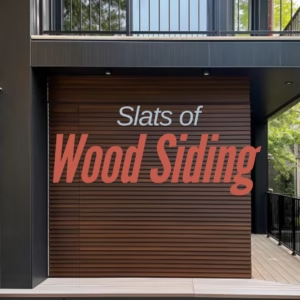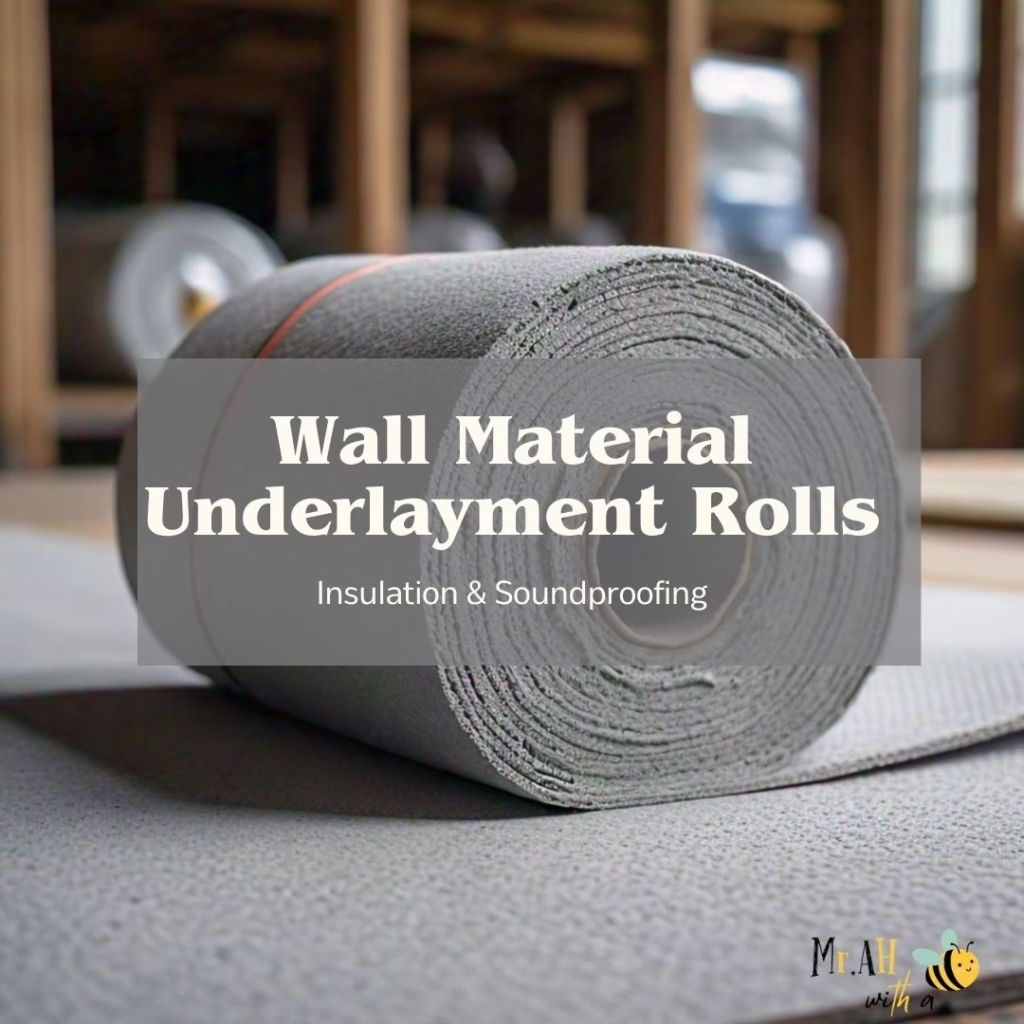Wall material underlayment rolls are essential in modern construction and renovation. By delivering insulation, soundproofing, and moisture protection, they provide a supportive layer between the structural wall and surface finish. To better understand their significance, in this post, we’ll explore several types of underlayment rolls—foam, felt, and plastic—each suited for specific applications. We will highlight their advantages, including improved energy efficiency, reduced noise transmission, and moisture prevention. Additionally, we’ll discuss practical applications in both residential and commercial settings, emphasizing their importance in creating comfortable, durable spaces.
What Are Wall Material Underlayment Rolls?
Types of Wall Material Underlayment Rolls
Foam underlayment
- Characteristics: Foam underlayment is lightweight, flexible, and easy to install, making it a convenient choice for various projects.
- Benefits: It helps maintain comfortable indoor temperatures, reduces noise levels, and offers excellent insulation and soundproofing properties.
- Applications: This type of underlayment is best suited for residential walls and areas prone to temperature fluctuations, providing a reliable barrier against drafts and outside noise.
Felt Underlayment
- Characteristics: Often made from recycled materials, felt underlayment is dense and durable, making it an environmentally friendly option.
- Benefits: It minimizes noise transmission while providing superior moisture resistance and sound dampening, protecting walls from water damage.
- Applications: This type of underlayment is perfect for older buildings or projects requiring extra moisture control, ensuring long-lasting performance in challenging environments.
Plastic (Polyethylene) Underlayment
- Characteristics: Plastic underlayment is waterproof and resistant to mold and mildew, providing strong protection against moisture.
- Benefits: It safeguards walls and structures from potential damage, offering long-lasting protection against water infiltration.
- Applications: This type of underlayment is typically used in bathrooms, kitchens, and damp environments, where moisture control is crucial for maintaining structural integrity.
Soundproof Underlayment
- Characteristics: This underlayment is specifically designed for noise reduction, utilizing advanced acoustic materials to minimize sound transmission.
- Benefits: It creates quieter living or working spaces by effectively reducing sound transmission between rooms.
- Applications: Ideal for studios, theaters, and multi-family residences, this underlayment enhances comfort by minimizing noise disturbances in shared environments.
Benefits of Using Underlayment Rolls
Moisture Protection
Effectively safeguarding against mold growth and structural damage, underlayment plays a vital role in preventing moisture from seeping into walls. Including rot and deterioration, it keeps moisture from penetrating the wall materials, which can lead to significant issues over time, by acting as a barrier. This protection is significantly important in areas prone to high humidity or water exposure, ensuring the longevity and integrity of the building structure.
Insulation and Energy Efficiency
Another crucial benefit of underlayment is its ability to enhance thermal insulation. By providing an additional layer of insulation, it keeps spaces warm in winter and cool in summer and helps maintain comfortable interior temperatures. Minimizing the need for heating and cooling systems to work as hard, not only contributes to occupant comfort but also reduces energy costs. As a result, buildings with effective underlayment can achieve improved energy efficiency and lower utility bills.
Sound Dampening
By absorbing sound waves and reducing noise transmission between rooms, underlayment significantly contributes to sound dampening. This quality creates a quieter and more comfortable environment, especially beneficial in multi-family residences, offices, or any space where noise control is essential. By minimizing distractions and enhancing privacy, underlayment improves the overall quality of life for occupants.
Smooth Surface for Finishing
In addition to its protective and insulating properties, underlayment provides a uniform base for wall coverings such as paint, wallpaper, or paneling. Allowing for better adhesion and a more aesthetically pleasing appearance, this smooth surface ensures a flawless finish. A well-prepared surface minimizes imperfections and enhances the overall look of the finished walls, contributing to a polished and professional result in any interior design project.
Installation Tips for Wall Material Underlayment Rolls
Preparation of the Wall Surface
- Clean the Wall: Clear away any dust, dirt, or debris to promote proper adhesion.
- Inspect for Cracks: Examine the wall for any cracks or uneven spots.
- Repair as Needed: Fill in cracks and level out uneven surfaces to create a smooth installation area.
- Ensure Smoothness: A well-prepared surface will improve the underlayment’s adhesion and overall performance.
Measuring and Cutting
- Take Accurate Measurements: Carefully measure the dimensions of the wall, noting any electrical outlets, windows, or other features that may impact the layout.
- Record Measurements: Write down your measurements to avoid confusion during cutting.
- Cut to Size: Use a utility knife or sharp scissors to cut the underlayment according to your measurements.
- Ensure Straight Cuts: Make straight cuts to prevent gaps or overlaps that could compromise the installation.
Proper Installation Techniques
- Secure the Roll: Use the appropriate adhesive or fasteners based on the material of the underlayment.
- Overlap Edges: Ensure that the edges overlap slightly to prevent gaps that can allow moisture, sound, or drafts to penetrate.
- Follow the Manufacturer’s Instructions: Adhere to the installation guidelines provided by the manufacturer for optimal results.
- Check for Proper Alignment: Make sure the underlayment is aligned correctly as you secure it to avoid misplacement.
Sealing and Finishing
Residential Projects
Whether during renovations or new builds, underlayment rolls play a vital role in enhancing comfort and efficiency in homes. It helps to maintain a consistent temperature throughout the house and reduces energy costs, they provide essential insulation. Additionally, underlayment improves soundproofing, creating a quieter living environment by minimizing noise transmission between rooms. Allowing families to enjoy a more peaceful space, it is particularly important in multi-story homes where noise can easily travel.
Commercial Projects
In commercial settings, underlayment rolls offer durability and soundproofing benefits that are important for offices and retail spaces. By reducing noise levels, they help create a professional atmosphere that can enhance employee productivity and customer experiences. The moisture resistance of underlayment also protects against water damage, making it ideal for high-traffic areas where spills and humidity may occur. Overall, ensuring they remain comfortable and efficient, underlayment contributes to the longevity and functionality of commercial spaces.
Specialty Applications
In conclusion, wall material underlayment rolls are essential components in modern construction and renovation, offering multiple benefits such as insulation, soundproofing, and moisture protection. Whether for residential or commercial projects, the right underlayment enhances comfort, energy efficiency, and overall durability. With various types available—foam, felt, plastic, and specialized soundproofing materials—each serves specific applications and has unique advantages. Investing in high-quality underlayment not only improves the aesthetic appeal of spaces but also ensures long-lasting performance and protection against potential issues like moisture damage and noise disturbances. Therefore, prioritizing the right underlayment is crucial for achieving optimal results in any building project.
FAQs
- What are wall material underlayment rolls?
They are thin, supportive layers used in wall construction for insulation, moisture control, and soundproofing. - What materials are underlayment rolls made of?
Common materials include foam, felt, plastic, and soundproofing composites. - How do underlayment rolls improve insulation?
They reduce heat transfer, maintain indoor temperatures, and lowering energy costs. - Are underlayment rolls waterproof?
Many, like plastic underlayment, are waterproof and protect walls from moisture damage. - Can I install underlayment rolls myself?
Yes, with proper preparation, measuring, and securing techniques, they are DIY-friendly. - What is soundproof underlayment?
It’s a type of underlayment designed to minimize noise transmission between spaces. - Where are underlayment rolls most commonly used?
They are used in residential walls, bathrooms, kitchens, and commercial spaces. - Do underlayment rolls affect wall finishes?
Yes, they create a smooth base for flawless finishes like paint or wallpaper. - How long do underlayment rolls last?
They are durable and can last decades when installed correctly. - What tools are needed for installation?
You’ll need a utility knife, measuring tape, adhesive, and possibly a staple gun.
For more articles regarding DIY, click the link below




Thank you for reading, for more interesting articles visit our homepage.




Pingback: Why Is My Smoke Detector Beeping? Causes and Fixes
Pingback: Why Is a Shingling Hammer Ideal for Roofing Work?